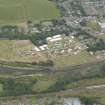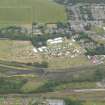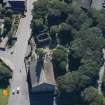Pricing Change
New pricing for orders of material from this site will come into place shortly. Charges for supply of digital images, digitisation on demand, prints and licensing will be altered.
Wick, High Street, Wick Old Parish Church
Church (19th Century)
Site Name Wick, High Street, Wick Old Parish Church
Classification Church (19th Century)
Canmore ID 104701
Site Number ND35SE 132
NGR ND 36153 51162
Datum OSGB36 - NGR
Permalink http://canmore.org.uk/site/104701
- Council Highland
- Parish Wick
- Former Region Highland
- Former District Caithness
- Former County Caithness
ND35SE 132 36153 51162
Not to be confused with Old St Fergus Church, within the same churchyard (ND35SE 1).
ARCHITECT: John Henry 1822
REFERENCE - Scottish Record Office
Site for the New Church.
Circular Letter.
The Heritor's wishes are sought.
1820 GD 136/716
Completion of the New Parish Church.
The Heritors now wish that the process of the division of the Church
should be undertaken.
1830 GD 136/741
Publication Account (1983)
It has been suggested that the original parish church of Wick stood at the eastern end of the town at Mount Hooly, but at some date (as yet undetermined) was transferred to a site at the west end of High Street (Beaton, 1909, 54). The name Mount Hooly does seem to indicate a church or chapel and in 1881 foundations of a building were laid bare but to all appearances it was that of a dwelling house. At the same time, however, an object said to have been a baptismal font was unearthed (Beaton, 1909, 54). There is some indication that the church at the western end of the High Street was rebuilt in 1799, but the present structure dates from 1830 (Beaton, 1909, 301; Groome, 1894, v, 490). There is an interesting fragment of the old church, designated Sinclair's Aisle, which was said to have been built by George, Fourth Earl of Caithness who died in 1583. The remains, situated in the churchyard alongside the present parish church, are marked with unseemly modern crenellations
{RCAM, 1911, 135).
Information from ‘Historic Wick: The Archaeological Implications of Development’ (1983).




















